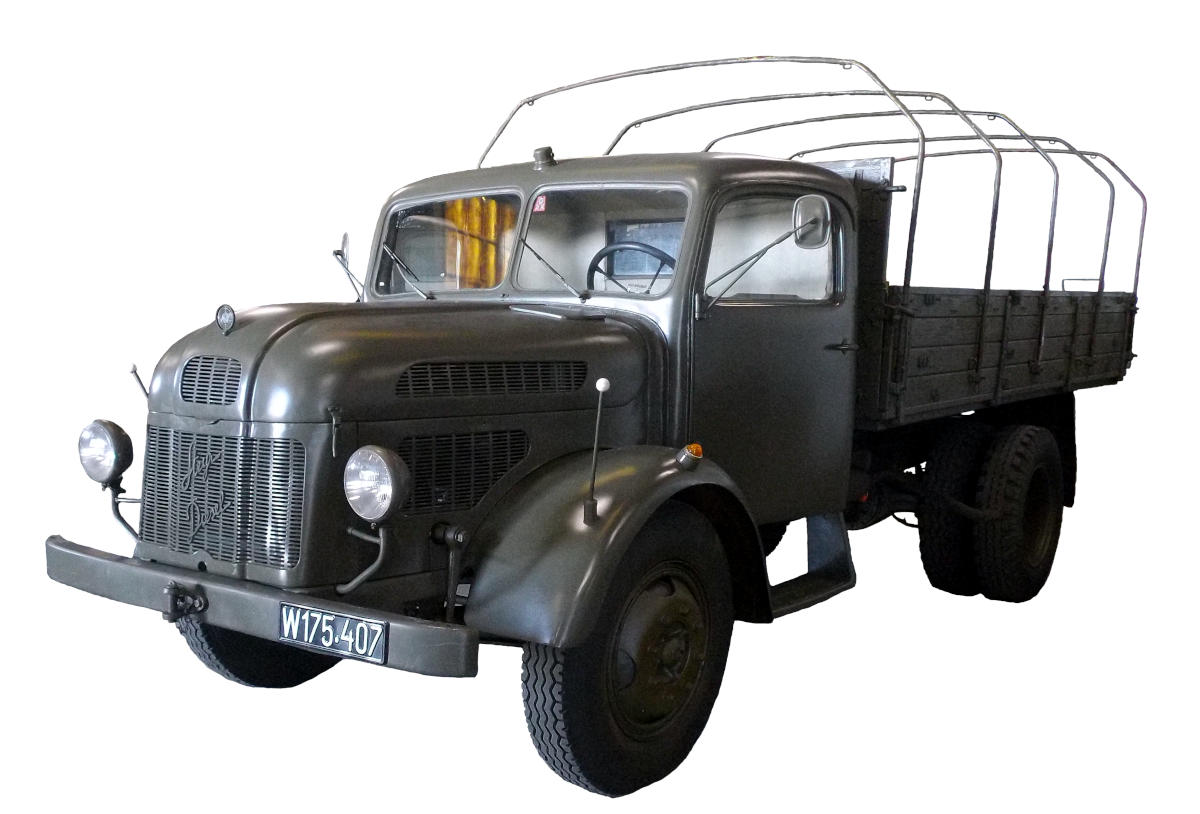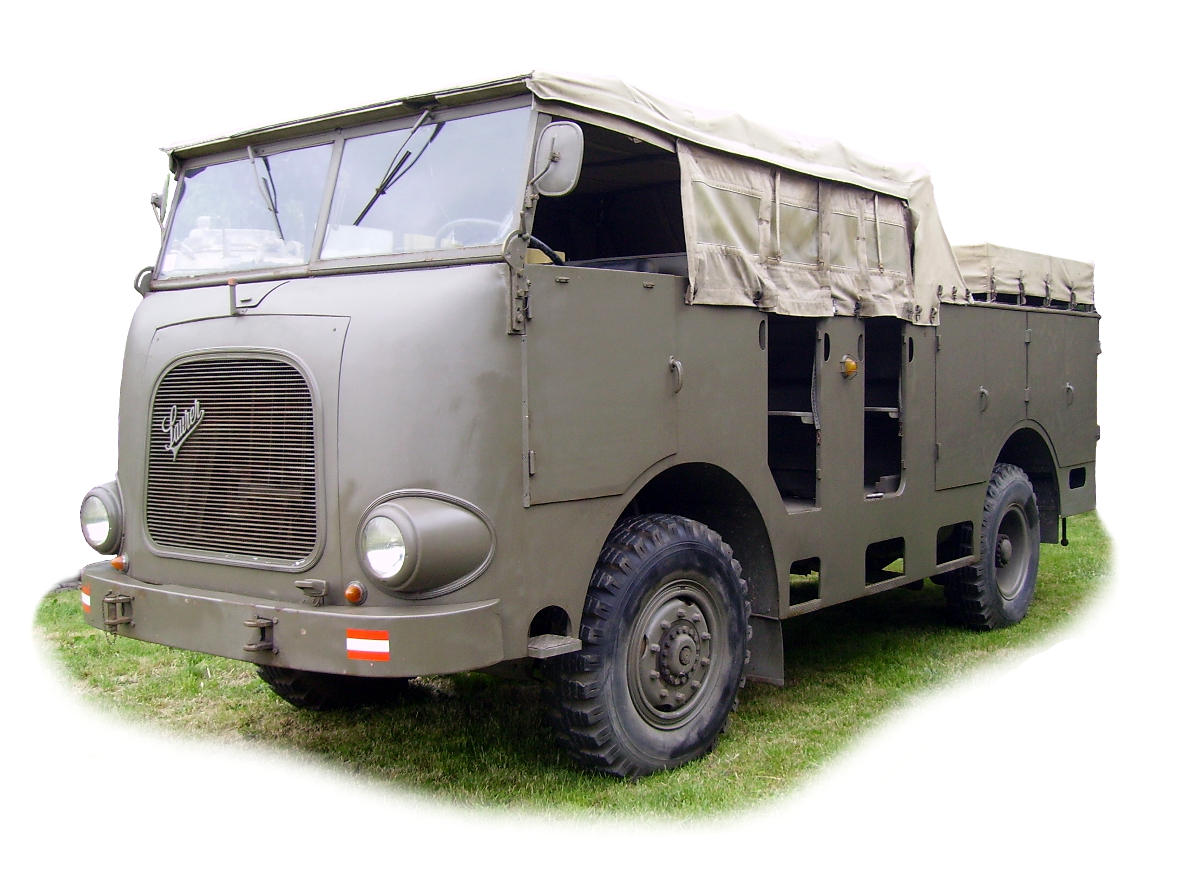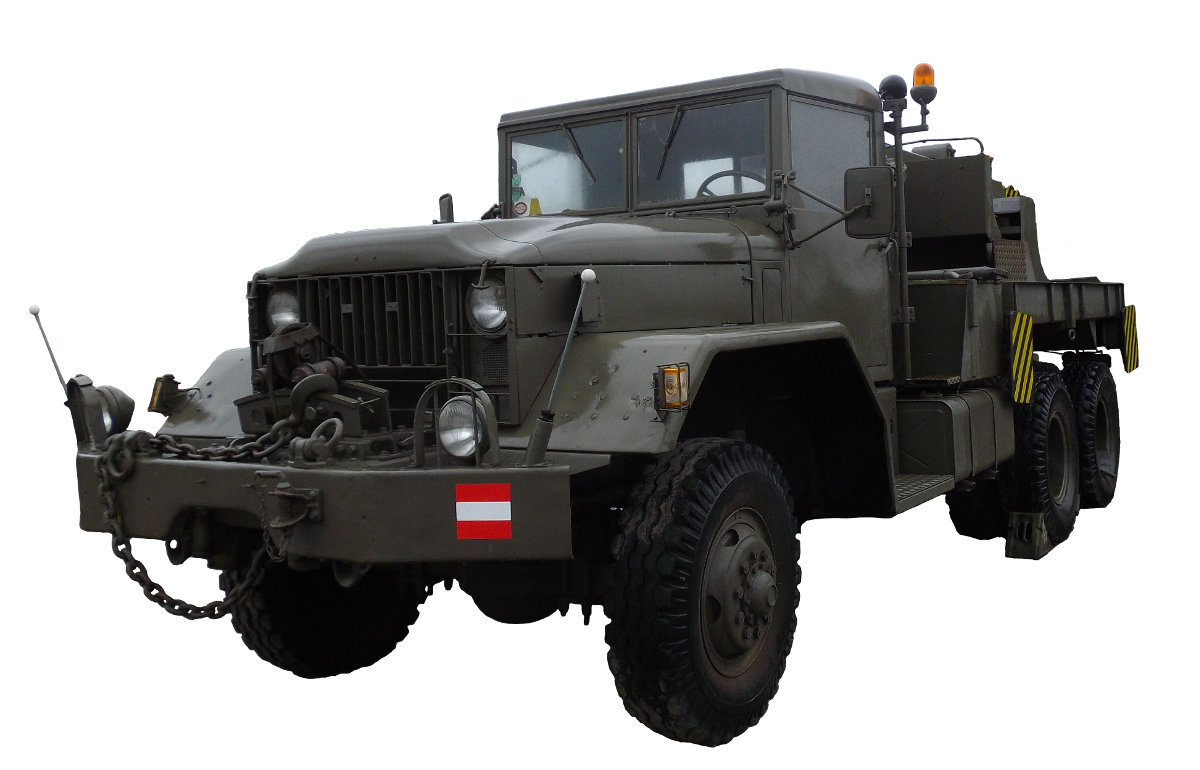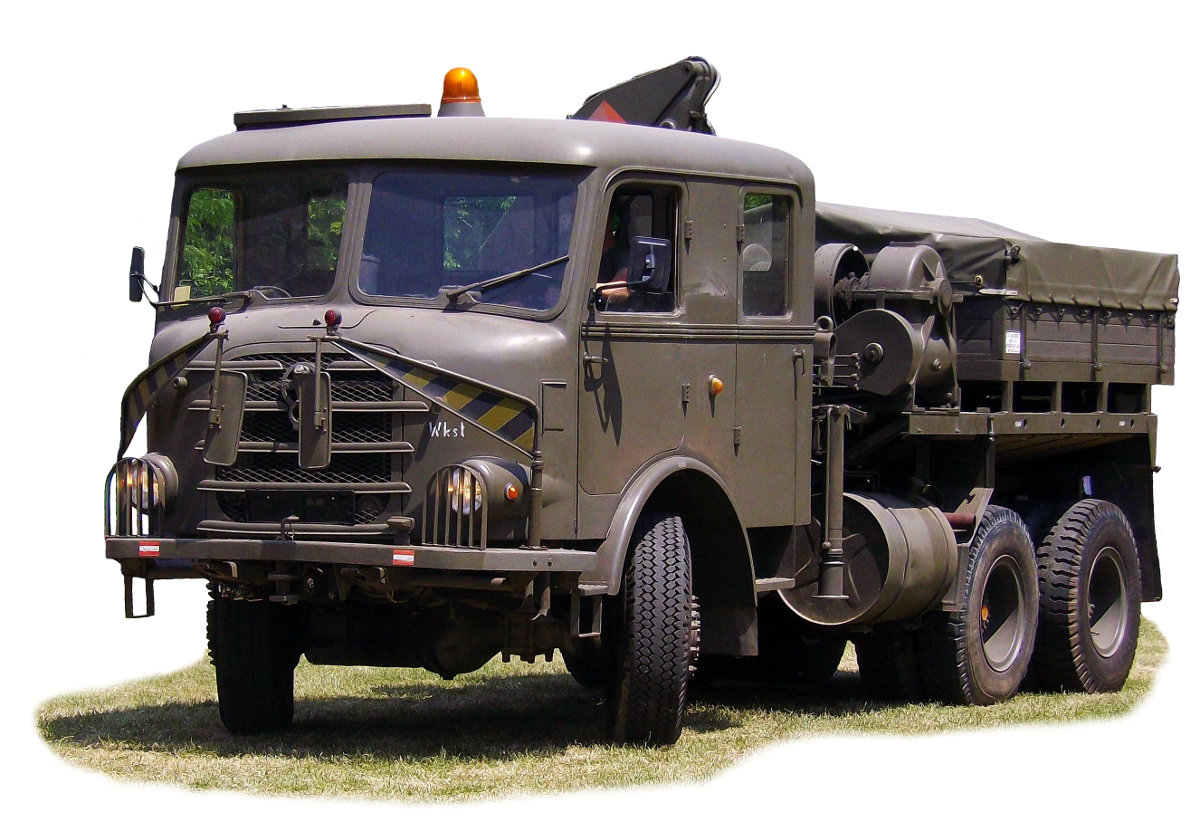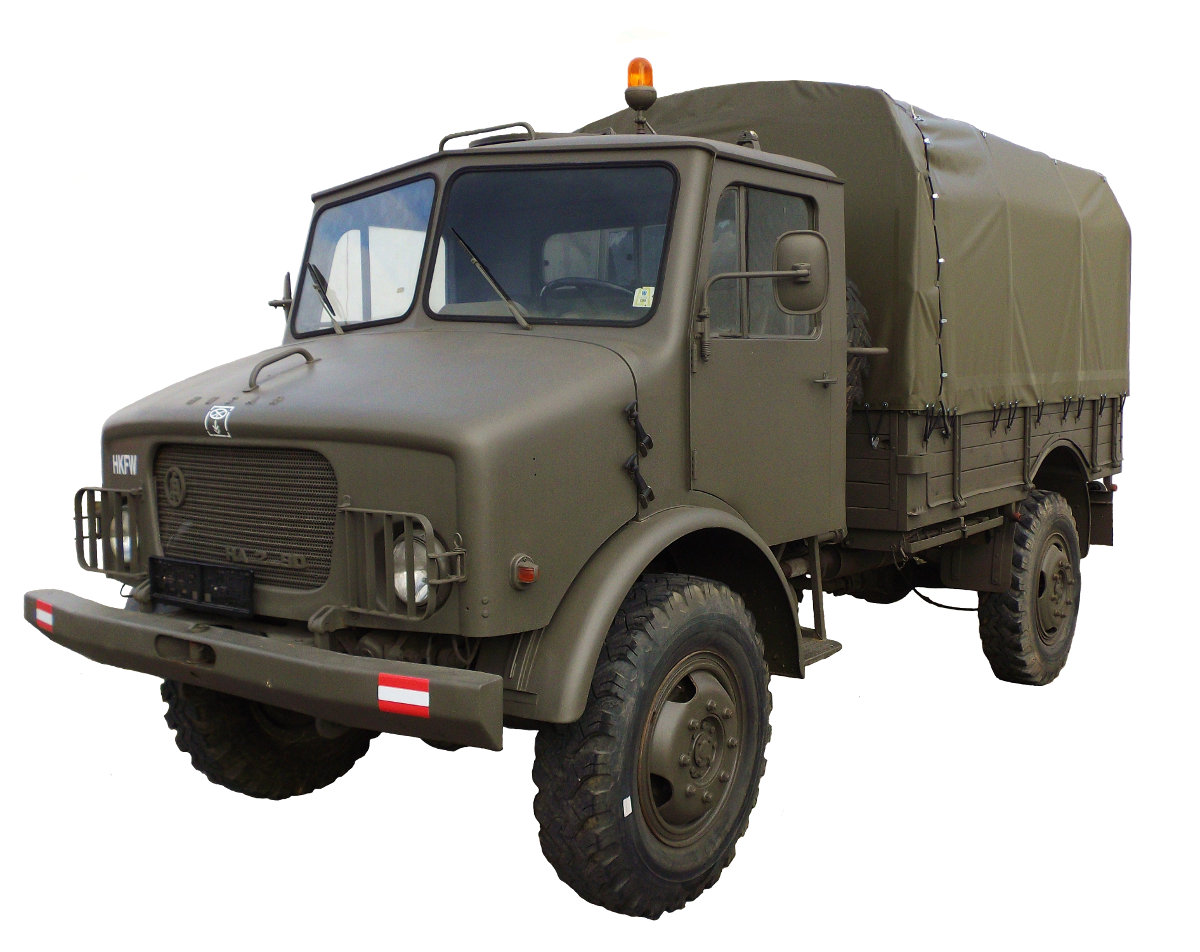Truck, D, 3 t (Steyr 380)
Immediately after reforming the Austrian Military in 1956, plans started to replace the motor vehicles left behind by the allied occupation forces with Austrian-manufactured equipment. The Steyr truck plant had already commenced manufacturing of the light Steyr 2000 A truck in 1945 – mainly from existing parts stock – and in 1947 they presented the Steyr 370, the first new truck model after the war. It was powered by a V8 gasoline engine, however the urgent need for re-motorization of the country made fuel economy not too much of an issue. Just one year later however, Steyr’s new WD 413 4-cylinder diesel engine was introduced in the new Type 380.



